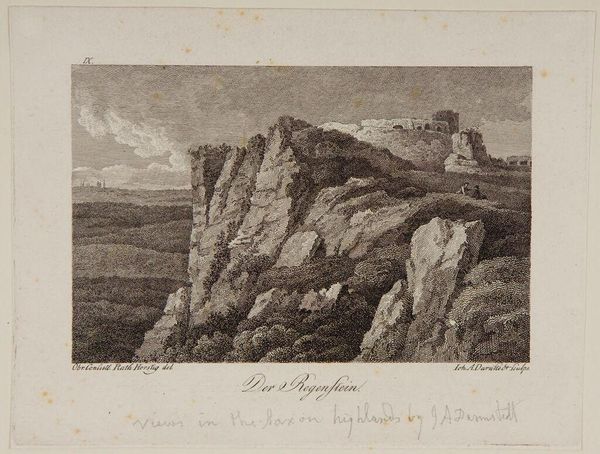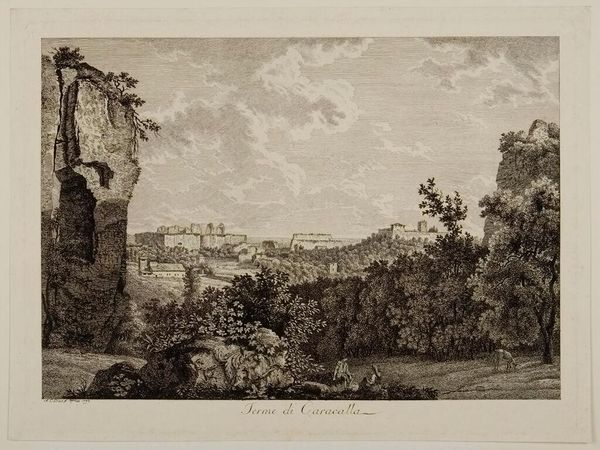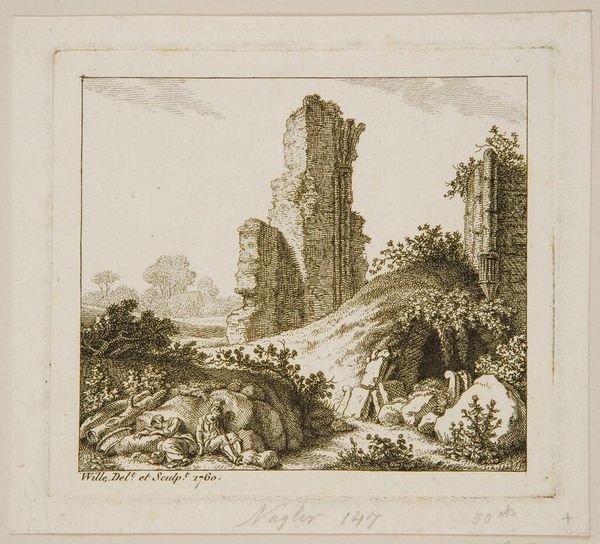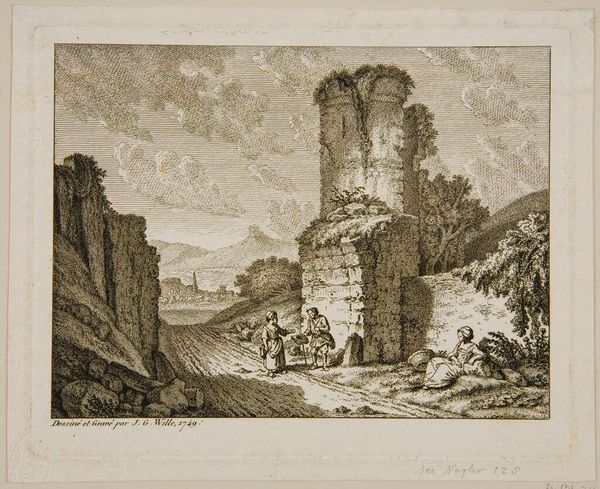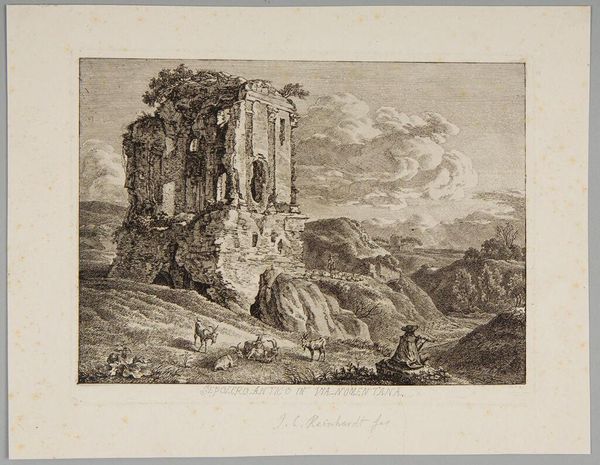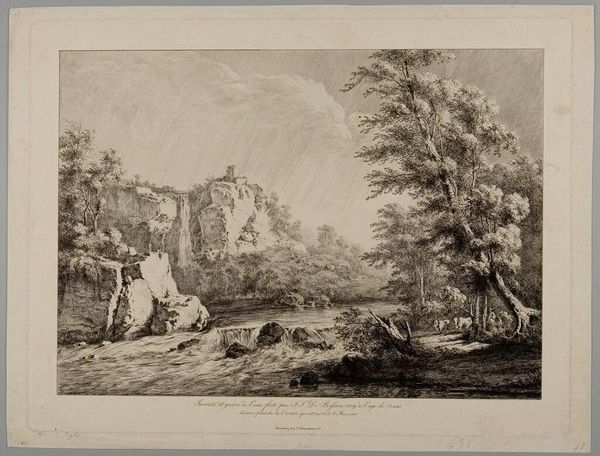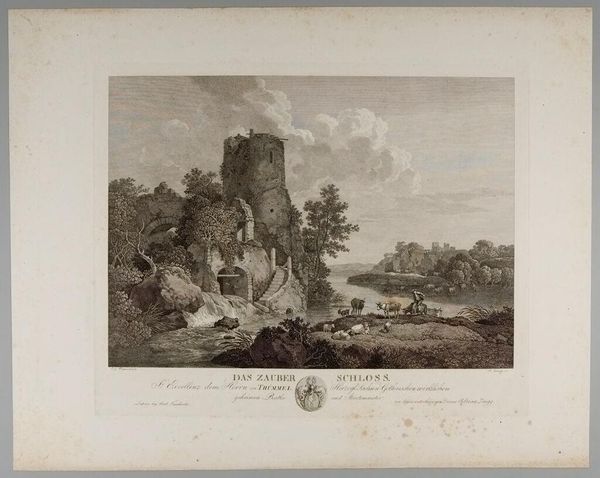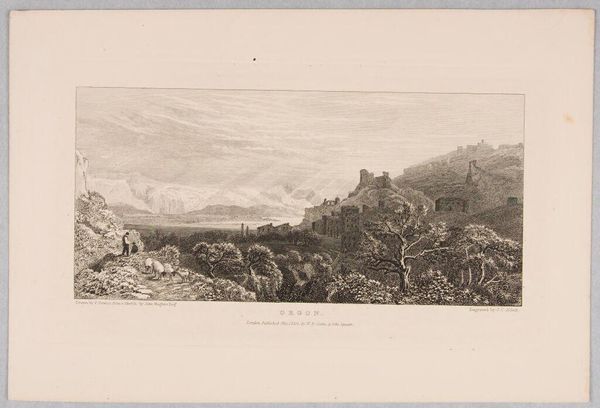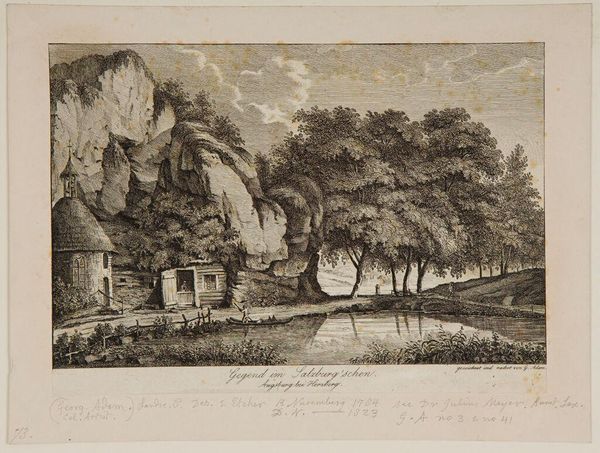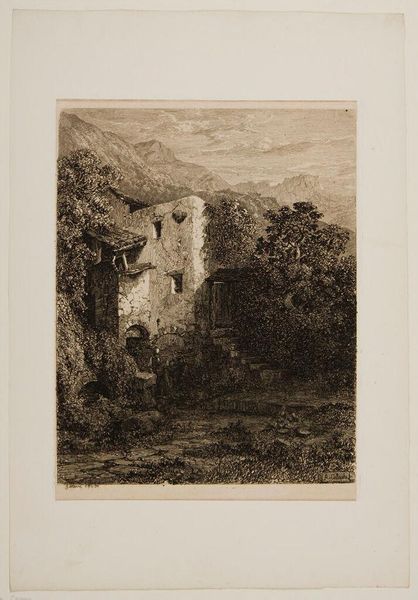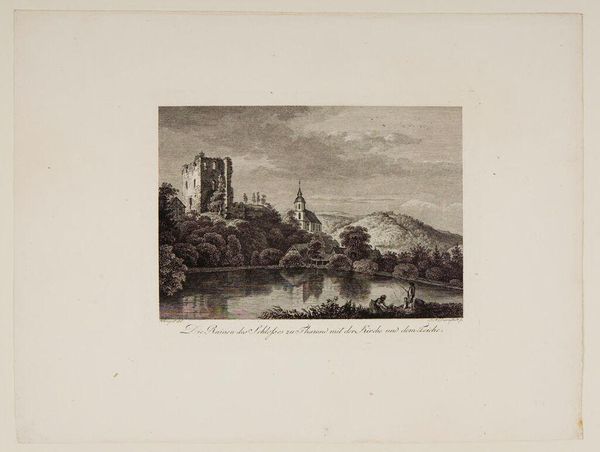
Ruins of Kifthaüser and View of the Golden Pasture 18th-19th century
0:00
0:00
Copyright: CC0 1.0
Editor: Here we have Johann Adolph Darnstedt's "Ruins of Kifthaüser and View of the Golden Pasture." It evokes such a feeling of melancholy, doesn't it? What significance might these ruins have held for viewers of the time? Curator: Ruins are heavy with symbolism. They represent the passage of time, the fall of empires, and perhaps even a longing for a lost, idealized past. Notice the figures at the base of the rocks. What feelings do they evoke? Editor: They seem to be resting, maybe contemplating the landscape. Perhaps they are reflecting on history? Curator: Precisely! The ruins act as a tangible link to that history, prompting reflection on mortality and the cyclical nature of civilization. The "Golden Pasture" hints at an Edenic state, now lost. Editor: I see. The contrast between the ruins and the golden pasture creates this tension. Curator: Exactly. The artist uses these symbols to speak to enduring human concerns about loss and the search for meaning within time's relentless flow. Editor: That adds so many layers to what initially seemed like just a landscape. Thanks! Curator: Indeed! It highlights how symbols enrich our understanding of art and history.
Comments
No comments
Be the first to comment and join the conversation on the ultimate creative platform.
